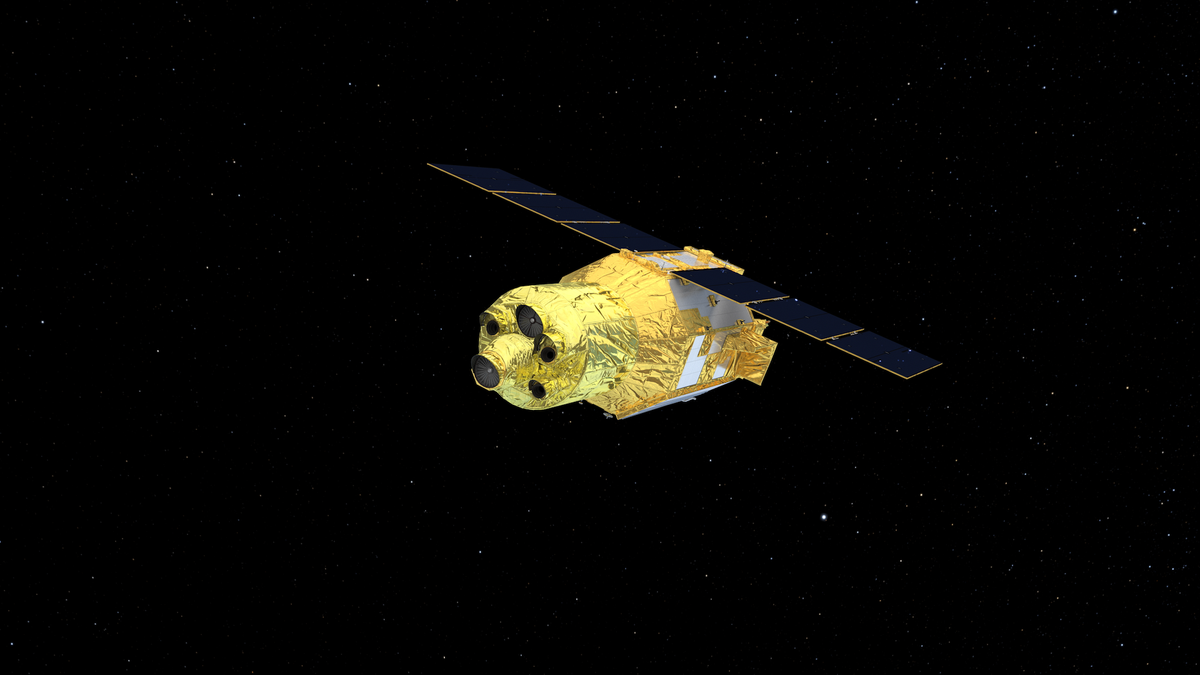
We'll soon get sharper vision on cosmic X-rays.
A new satellite aims to study huge objects in the universe, using instruments able to measure the heat of a single X-ray photon. The X-ray Imaging and Spectroscopy Mission (XRISM — pronounced "crism") will analyze X-rays using the widest field-of-view instrument ever implemented in this kind of imaging probe.
The instrument will be able to "pry apart high-energy light into the equivalent of an X-ray rainbow," according to a NASA statement. XRISM is scheduled to launch from Japan's Tanegashima Space Center on Aug. 25 (August 26, Japan time zone). Exact time of day has not yet been announced. When the mission launches, you can watch it live here at Space.com.
Related: New X-ray photo shows famous Crab Nebula like never before
XRISM is being led by JAXA, with collaboration from NASA and scientific participation with the Canadian and European space agencies.
"The mission will provide us with insights into some of the most difficult places to study, like the internal structures of neutron stars and near-light-speed particle jets powered by black holes in active galaxies," Brian Williams, XRISM project scientist at NASA's Goddard Space Flight Center, said in an agency statement. (Active galaxies are large collections of stars with an unusual amount of energy being produced in the center.)
The satellite will use a pair of instruments to study massive cosmic phenomena. Examples include the effects of extreme gravity on the behavior of matter, emissions from dense, city-sized star cores known as neutron stars, distant particle jets, and black hole rotations.
Related Stories:
The first instrument on XRISM, a spectrometer for X-rays, is called Resolve. Each of the pixels in Resolve's 6-by-6-pixel detector can absorb a singular X-ray photon. The instrument's precise capability will let Resolve catalog up to millions of measurements in ultra-high resolution.
To do its mission, the instrument must be chilled to super-cold temperatures, near absolute zero. Resolve's housing sits in a special flask (a dewar) of liquid helium, which chills the instrument to around -460 degrees Fahrenheit (-270 Celsius).
Resolve's field of view will be enlarged with a complimentary instrument called Xtend. Xtend will allow Resolve to capture images within an area wider than any previous X-ray imaging satellite — an area of the sky about 60 percent bigger than a full moon.
Both Resolve and Extend will use twin X-ray mirror assemblies developed at Goddard, nearby Baltimore.
Science - Latest - Google News
July 30, 2023 at 07:00PM
https://ift.tt/vwn84Wy
New satellite will able to see 'X-ray rainbow' from huge objects in space - Space.com
Science - Latest - Google News
https://ift.tt/FIUhexJ
https://ift.tt/nqdfNID
Bagikan Berita Ini

















0 Response to "New satellite will able to see 'X-ray rainbow' from huge objects in space - Space.com"
Post a Comment